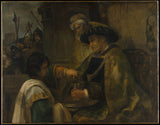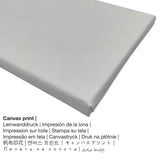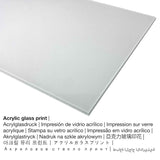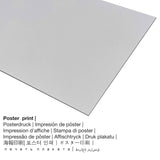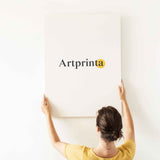Rembrandt van Rijn, 1660 - Πιλάτος που πλένει τα χέρια του - εκτυπώσεις καλών τεχνών
Με ΦΠΑ. Η ναυτιλία υπολογίζεται στο ταμείο.
Περίληψη του προϊόντος εκτύπωσης
Πιλάτος που πλένει τα χέρια του is a work of art painted by the painter Rembrandt van Rijn. The more than 360 year-old original was painted with the following size: 51 1/4 x 65 3/4 ίντσες (130,2 x 167 εκ.) and was manufactured on the medium oil on canvas. Besides, the piece of art is in the the art collection of Το Μητροπολιτικό Μουσείο Τέχνης, το οποίο είναι ένα από τα μεγαλύτερα και καλύτερα μουσεία τέχνης στον κόσμο, που περιλαμβάνει περισσότερα από δύο εκατομμύρια έργα τέχνης που εκτείνονται σε πέντε χιλιάδες χρόνια παγκόσμιου πολιτισμού, από την προϊστορία μέχρι σήμερα και από κάθε μέρος του πλανήτη. κλασική τέχνη artpiece, which is part of the public domain is being provided with courtesy of The Metropolitan Museum of Art, New York, Bequest of Benjamin Altman, 1913. The creditline of the artwork is: Bequest of Benjamin Altman, 1913. In addition to that, the alignment is τοπίο με πλευρική αναλογία 4: 3, που υπονοεί ότι το μήκος είναι 33% μεγαλύτερο από το πλάτος. The painter Rembrandt van Rijn was a European artist from the Netherlands, whose art style can primarily be assigned to Baroque. The Baroque artist lived for 63 χρόνια, γεννήθηκε το 1606 στο Λέιντεν και πέθανε το έτος 1669.
Επιλέξτε το υλικό του προϊόντος σας
Για κάθε εκτύπωση τέχνης προσφέρουμε μια σειρά από διαφορετικά υλικά και μεγέθη. Σας επιτρέπουμε να επιλέξετε ανάμεσα στις ακόλουθες παραλλαγές:
- Διδεσμός αλουμινίου: These are metal prints on aluminium dibond material with an impressive depth effect. A direct Direct Print on Aluminum Dibond is the excellent start to art prints with aluminum. For our Direct Aluminium Dibond print, we print your selected artpiece right on the surface of the white-primed aluminum composite.
- Εκτύπωση σε καμβά: A canvas print is a printed canvas mounted on a wood stretcher. Canvas prints are relatively low in weight, meaning that it is easy and straightforward to hang up the Canvas print without additional wall-mounts. A canvas print is suited for any kind of wall.
- Τυπωμένη αφίσα (υλικό καμβά): The poster print is a printed sheet of canvas with a slight surface structure, which resembles the actual version of the masterpiece. It is ideally suited for putting the art print with the help of a special frame. Please note, that depending on the size of the poster we add a white margin between 2-6cm around the painting in order to facilitate the framing.
- Εκτύπωση από ακρυλικό γυαλί: A glossy print on acrylic glass, often referenced as a plexiglass print, will convert your favorite original work of art into brilliant home decoration. Your favorite artwork is being manufactured with the help of modern UV print technology. This makes rich and sharp color shades. The great advantage of a plexiglass fine art print is that sharp contrasts plus small details will be recognizeable thanks to the subtle tonal gradation. The real glass coating protects your selected art print against sunlight and heat for many decades.
Οροι Χρήσης: We try everythig possible to depict the products as accurately as possible and to display them visually in our shop. However, the pigments of the print materials and the print result may vary marginally from the presentation on the device's monitor. Depending on your settings of your screen and the nature of the surface, not all color pigments are printed as realistically as the digital version on this website. Given that all our art reproductions are processed and printed manually, there may also be minor differences in the size and exact position of the motif.
Πίνακας ειδών
| Εκτύπωση τύπου προϊόντος: | Wall Art |
| Μέθοδος αναπαραγωγής: | ψηφιακή αναπαραγωγή |
| Μέθοδος κατασκευής: | Απευθείας UV εκτύπωση (ψηφιακή εκτύπωση) |
| Προέλευση των προϊόντων: | κατασκευάζονται στη Γερμανία |
| Τύπος αποθέματος: | παραγωγή κατ 'απαίτηση |
| Προβλεπόμενη χρήση προϊόντος: | σχεδιασμός σπιτιού, τέχνη τοίχων |
| Στοίχιση εικόνας: | ευθυγράμμιση τοπίου |
| Λόγος διαστάσεων: | 4 : 3 (μήκος : πλάτος) |
| Λόγος διαστάσεων που σημαίνει: | το μήκος είναι 33% μεγαλύτερο από το πλάτος |
| Παραλλαγές υφασμάτων: | Εκτύπωση ακρυλικού γυαλιού (με επίστρωση πραγματικού γυαλιού), εκτύπωση σε καμβά, εκτύπωση αφίσας (χαρτί καμβά), εκτύπωση μετάλλου (αλουμίνιο dibond) |
| Παραλλαγές μεγέθους καμβά σε φορείο (εκτύπωση σε καμβά): | 40x30cm - 16x12", 80x60cm - 31x24", 120x90cm - 47x35", 160x120cm - 63x47" |
| Εκτύπωση ακρυλικού γυαλιού (με επίστρωση πραγματικού γυαλιού): | 40x30cm - 16x12", 80x60cm - 31x24", 120x90cm - 47x35", 160x120cm - 63x47" |
| Επιλογές μεγέθους εκτύπωσης αφίσας (χαρτί σε καμβά): | 40x30cm - 16x12", 80x60cm - 31x24", 120x90cm - 47x35" |
| Εκτύπωση Dibond (υλικό αλουμινίου): | 40x30cm - 16x12", 80x60cm - 31x24", 120x90cm - 47x35" |
| Κορνίζα: | Δεν περιλαμβάνονται |
Δομημένες λεπτομέρειες του έργου τέχνης
| Όνομα έργου τέχνης: | «Ο Πιλάτος που πλένει τα χέρια του» |
| Κατηγοριοποίηση: | ζωγραφική |
| Ευρεία κατηγορία: | κλασική τέχνη |
| Περίοδος: | 17th αιώνα |
| Έτος δημιουργίας: | 1660 |
| Ηλικία του έργου τέχνης: | ηλικίας άνω των 360 ετών |
| Ζωγραφισμένο σε: | λάδι σε καμβά |
| Διαστάσεις του αρχικού έργου τέχνης: | 51 1/4 x 65 3/4 ίντσες (130,2 x 167 εκ.) |
| Μουσείο: | Το Μητροπολιτικό Μουσείο Τέχνης |
| Τοποθεσία Μουσείου: | Νέα Υόρκη, Νέα Υόρκη, Ηνωμένες Πολιτείες της Αμερικής |
| Ιστοσελίδα: | Το Μητροπολιτικό Μουσείο Τέχνης |
| Άδεια έργου τέχνης: | δημόσιος τομέας |
| Παραχώρηση του: | The Metropolitan Museum of Art, Νέα Υόρκη, Κληροδότημα Benjamin Altman, 1913 |
| Πιστωτική γραμμή του έργου τέχνης: | Κληροδότημα του Μπέντζαμιν Άλτμαν, 1913 |
Δομημένα μεταδεδομένα καλλιτέχνη
| Όνομα καλλιτέχνη: | Rembrandt van Rijn |
| Φύλο καλλιτέχνη: | αρσενικός |
| Εθνικότητα καλλιτέχνη: | Ολλανδικά |
| Επαγγέλματα: | ζωγράφος |
| Πατρίδα: | Κάτω Χώρες |
| Ταξινόμηση καλλιτέχνη: | γέρος δάσκαλος |
| στυλ: | Μπαρόκ |
| Διάρκεια ζωής: | 63 χρόνια |
| Ετος γέννησης: | 1606 |
| Τόπος γέννησης: | Leiden |
| Έτος θανάτου: | 1669 |
| Η πόλη του θανάτου: | Άμστερνταμ |
Πνευματικά δικαιώματα ©, www.artprinta.com (Artprinta)
Πρόσθετες προδιαγραφές από το μουσείο (© Copyright - The Metropolitan Museum of Art - www.metmuseum.org)
Critical opinions of this picture have varied considerably since about 1905, when Wilhelm von Bode described it as "a somewhat abnormal work" by Rembrandt. However, most scholars since the 1940s have dated the painting to the 1660s and assigned it to an anonymous pupil. The composition is reminiscent of mature works by Rembrandt but the Rembrandtesque surface effects fail to convey anything like the master's command of illumination and modelling. The name of his only known pupil of the 1660s, Arent de Gelder, has been put forward speculatively.

